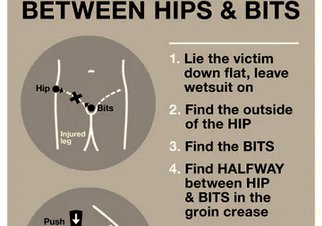-

-
The Discerning Mollusk's Guide to Arts & Ideas
-


. . . Through 2022 I was a roving, sometimes raving, reporter for a weekly online salon organized by the writer David Collard. Authors and artists from around the world, including many Exacting Clam alumni and affiliates, would present and discuss their work there at the Glue Factory, and the Clam editors have kindly offered to disseminate a selection of my reports. Here’s one from March, on cars, sharks, cyborgs and systems.

ello all.
I thought I would use this evening’s talk to bring us up to date with everything that has been going on in the world of shark attacks.
I’ve got to disclaim at this point that, although I wrote a book with “Sharks” prominently in the title, I’m not actually interested in sharks. Not in-and-of themselves. I’m interested, rather, in what other areas sharks help me to think about; things like, “Death” or “Surfers.” I use sharks, like a shark fisherman does, or much like Melville uses the body and the world of the whale, to discuss matters beyond just the sea creature. Although once you start looking, the body of the shark is actually fascinating, so maybe I can see why people become shark nerds, at that.
And as a writer, I’m interested, too, in how other people write about and imagine encounters with sharks. It’s not so much the fact that occasionally in the water people intersect with sharks; this will obviously happen, sometimes. It’s just one of those things. What I do look at is how these times and meetings are translated into text, what words and literature we craft out of the shark attack. And what else is included in the scenario, what else swims into view when a writer is describing a shark.
That’s what I’ll round up here: how human encounters with sharks are written about. It’s a long story, but for this evening, I’ll start about a hundred years ago and come swiftly up to date.
In 1916, there were the famous East Coast attacks, when several young men were killed in New Jersey, at first on the seaboard. But then the sharks started to come inland: into the bay, up the creeks, to the country villages, getting the farm boys. I learnt about this spate of attacks from the excellent Shadows in the Sea, by McCormick, Allen and Young.
This 1963 book demonstrates one of the things I look at in shark literature, which is, its binocular (and more) aspect: a work tells us about the time that it’s describing, but also of course about the time that it’s written. Then the third, extending or perhaps triangulating aspect is the time of our reading. In this book, the authors in 1963 highlight that this 1916 “shark season” coincided both with American entry into World War 1 and with an epidemic of polio. In the early sixties, these are the aspects that the authors picked out, about events of fifty years earlier.
I was much taken by their noticing of polio, a disease that gets into the blood system then lurks there, circulating, waiting for the time to pounce. There’s a lot to be investigated in this contrast between the paralysis of polio, the immobility it causes, versus its then-mysterious spread, its fluidity (there was a strong fear that you could catch it in swimming pools, from the water). Then there’s a third strand, with the development of inoculation, distributing the vaccine. I think there’s an interesting parallel between polio and the shark, with its stillness, its speed, its hiddenness.
The 1916 attacks return as a concern of Brody and Hooper in the 1975 film (not the book) of Jaws. You see them babbling on to the mayor:
“It’s gonna happen again, it’s happened before, the Jersey beach, right—nineteen sixteen—there were five people—five people—they were chewed up in the surf—in one week.”
This—Jaws—is another manifestation of shark attack.
Now I’ll circle back to 1958, and the establishment of the International Shark Attack File, an initiative in which one of my elasmobranch heroes, Dr. Samuel Gruber, was heavily involved. The File is a proper academically-maintained database of shark attack events, which offers an excellent questionnaire for participants to fill in. Sample questions: please describe the type, number, size of your assailant. With the great instruction: use extra pages if necessary.
Next shark encounter: Lew Boren, surfer, killed by a great white shark off the California coast in 1981, as described in Kief Hillsbery’s excellent article in issue 375 of Rolling Stone magazine. A vital point about Lew Boren’s death is what it gives the journalist an opportunity to talk about, which is, society and its changes. He uses the life and death of Lew Boren as a microcosm of or parable for the incipient Reagan era: “Lew was amazing: a 60s person in an 80s world.” But Lew does not survive.
Next: 2014, Australian attack, swimmer killed, only her little red bathing cap found, floating on the surface. It’s the details that grab the reader, in the story.
September 2021: I read an article that is not a report of an attack, but a description of a new technique for stopping blood loss, devised by Dr Nicholas Taylor, associate dean of the Australian National University, and a surfer. Published in the Journal of Emergency Medicine Australasia in February, his idea is to help people who have been bitten by a shark. If there’s damage to the femoral artery, which can cause a lot of trouble, rather than tangling around with a tourniquet, the new technique is to exert firm pressure down on the mid hip-crease using a rigid arm. And there’s a slogan to help remember this, which is, “Push hard halfway between hips and bits.”
The article I read described this as a mnemonic, which I’m not sure that it is; it’s just a phrase. But I’ll come back to this idea, to Taylor’s medical technique, at the end.
February 2022: recent, sad death of a British swimmer in Australia: the witness recounts that the attacking shark “looked like a car in the water.”
This is a vital point: sharks as vehicles. I’m always going on about this: that cars are sharks. Why? Because they are sleek, long, dark vehicles that go fast. With fins. Because when there is a collision between a car / shark and a person, it’s usually detrimental to the person. The shark and the car, particularly in dramatic situations, can contain people whose encounter with it has proved fatal. Also, as I suggested at the start, sharks and cars too are vehicles for meaning: they are metaphores, removal vans, for shifting meanings about to new places.
I’ll bring in here the French author Roland Barthes and his book Mythologies, a collection of essays written between 1954 and 1956, published in 1957. The first English translation was in 1972, and I have a Vintage Classics edition from 2000, translated by Annette Lavers, which has a back cover blurb from playwright Dennis Potter that reads:
Semiology is the study of the signs and signals, the symbols, gestures and messages through which western society sustains, sells, identifies and yet obscures itself by painting or powdering over its raddled, whore-like visage . . .
Which I fear tells us a lot more about Dennis Potter than it does about French philosophy. But in relation to Barthes, I’d like to discuss probably the most famous essay in Mythologies, which is about a type of car, the Citroën D.S. 19. I’ll just recap the basics, for anyone who is uninterested in cars, or not familiar with this utterly beautiful one, produced between 1955 and 1975 (the year I was born).
The initials in the name are just letters, as far as I know, not code for anything automotive. But pronounced in French as D S (day, ess), they sound the same as déesse, the word for goddess. There’s also a cheaper model, same body but less powerful, called the I D (ee, day), like the word idée, which means idea. Calling your lovely new vehicles Goddess and Idea is quite something, especially as the long-running previous main model from Citroën was the more pedestrian Traction Avant, which has completely different linguistic connotations. And, the Traction just looks like a car from a previous century; they are comically different.
With the D.S., the normal shape is swooping down from front to back, like pompadoured hair. But there’s also a station wagon version, so that you can put your surfboards in the back or on top; an ambulance version that a stretcher fits in; the snazzy D super 5; and the Pallas, after the Greek goddess Athena, which opens up a whole new vista of mythology.
There are plenty of design innovations in the D.S., but one of the most notable is that is has hydro-pneumatic suspension throughout, instead of metal springs, which gives some technical blah about control, handling, as well as comfort. I’m not so interested in that as in the fact that it’s liquid throughout the system. Not water, but a mineral oil. But I am interested in all watery systems. In flow, motion, vehicles.
Anyway, lovely car, a liquid system, vocabulary that expands out in new directions: all this is good. What Barthes says about the D.S. is quite famous. He opens:
The New Citroën I think that cars today are almost the exact equivalent of the great Gothic cathedrals: I mean the supreme creation of an era, conceived with passion by unknown artists, and consumed in image if not in usage by a whole population which appropriates them as a purely magical object.
The car’s smoothness, he says, reveals perfection, the beyond human, just like Christ’s robes, or sci-fi airships. And he talks of
A new phenomenology of assembling, as if one progressed from a world where elements are welded to a world where they are juxtaposed and hold together by sole virtue of their wondrous shape.
The whole short essay is lovely, it’s quicker to read it yourself than for me to paraphrase, but details include Barthes saying that the D.S.’s glass is beautiful, like soap-bubbles or “a substance more entomological than mineral,” and that the car is engaged in moving categories, from the engine to the organism.
And he talks about the tactile pleasure of the design: “one pretends to drive with one’s whole body.” It’s an almost Crash-like merging of the human body, with the beetle, with the metal, with the mineral: an unbroken, a smooth combining of materials into a new schema. (I’m looking forwards to reading the new book from Harry Parker, my fellow guest this evening: Hybrid Humans, about how we design and merge with our machinery.)
So, there’s a particular car as described by Barthes in pre-1957, in the fun, first half of his Mythologies. In the second half of the book, he expounds on the function of myth as a type of language within society, and the political ramifications of this. This section is much denser, but it does contain this simile, near the end: “Just as the cuttlefish squirts its ink in order to protect itself, it [bourgeois ideology] cannot rest until it has obscured the ceaseless making of the world, fixated this world into an object which can be for ever possessed,” etc.
Even Barthes in full revolutionary spate comes back to talking about, using the metaphor of, a sea-creature on the attack. He’s a shark reporter, too.
As a side observation, what I get from reading his report on cars from so long ago, is that observation does not become dated: if you keep your eyes peeled, look at the world carefully, it’s never not important; it’s Ezra Pound’s “News that stays news.” Barthes was looking at the D.S., and that’s what I do too. I’m just part of a tradition, a long school or shoal of observers, who notice shark incidents and write about them. I’m looking at the cars, thinking about the sharks and the language.
Before I close I want to come back to the 2021 report of a new method for dealing with bleeding, the “push halfway” mantra. It’s a suggestion that’s been highly commended by other emergency medicine specialists. Dr. Anthony Brown, fish boffin and professor at the University of Queensland, says that it’s brilliant, “a fantastic life-saving idea.” He goes on:
“Your sole priority needs to be to stop the bleeding and wait for help. You’re a bit buggered if you’re the only one there, but generally speaking there is someone else there to help. Nobody surfs alone.”
This is nice. It might not be factually correct, but as a statement of intent, a principle, it’s great. Nobody surfs alone. This is what I want to end on. Barthes is from nearly seventy years ago, but his attention to detail never gets old. This is what keeping abreast of shark attack news, with its intricate entanglement with cars, has taught me, that I’d like to report to you: That there are always more details in the language, and, nobody surfs alone. It’s a message of solidarity.
Thanks.

Folios 284v and 285r of The Eadwine Psalter, c. 1150, at Trinity College, Cambridge, available via the Wren Digital Library. Showing the water systems in use at Christ Church, Canterbury..

Melissa McCarthy transmits from a tracking station in Edinburgh, Scotland. She’s written Photo, Phyto, Proto, Nitro (Sagging Meniscus, 2023) and Sharks, Death, Surfers: An Illustrated Companion (Sternberg, 2019). She’s fond of Melville. See sharksillustrated.org for more.